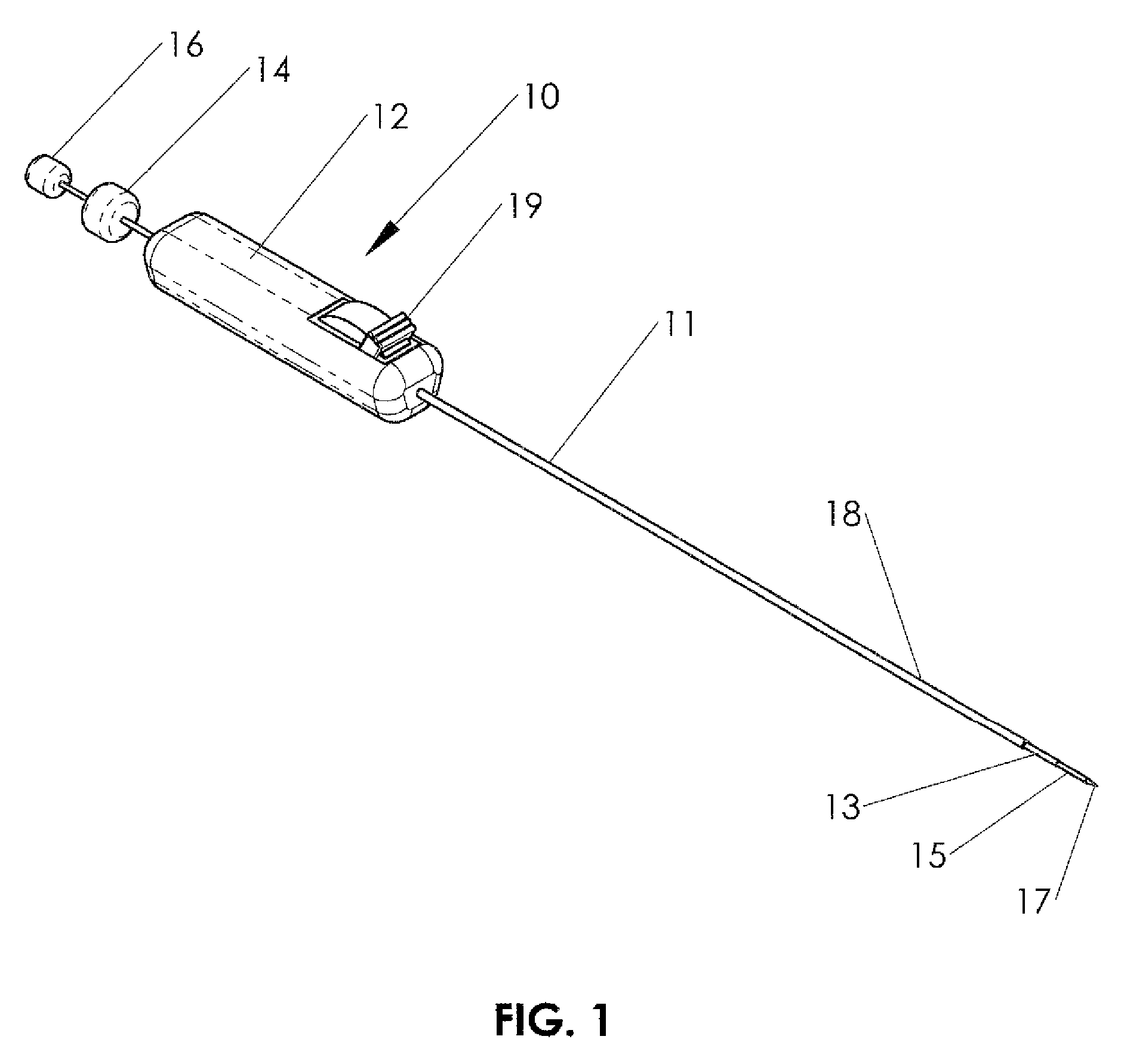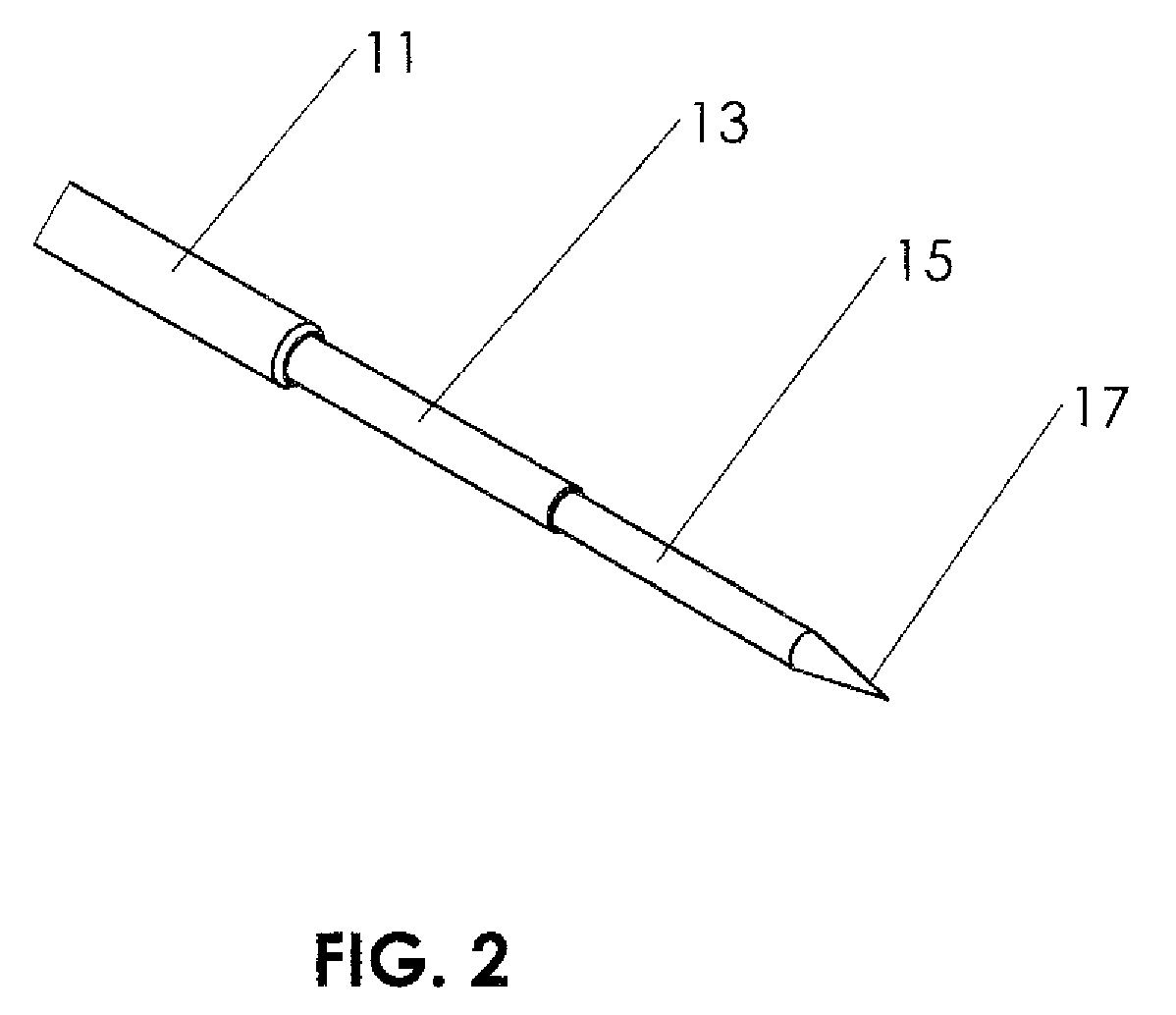Methods and devices for endoscopic treatment of organs
a technology for hollow organs and endoscopes, applied in the field of endoscopes and hollow organs, can solve the problems of post-operative pain, post-operative infection, and time required to gain access to the operative site, and achieve the effects of improving the quality of li
- Summary
- Abstract
- Description
- Claims
- Application Information
AI Technical Summary
Benefits of technology
Problems solved by technology
Method used
Image
Examples
Embodiment Construction
[0103]The invention will now be described in detail, with references made to the accompanying drawings. Reference numbers are used in the drawings and the description to refer to specific elements or aspects of the invention. Wherever possible the same reference numbers will be used to indicate the same elements or aspects throughout multiple drawings and descriptions.
[0104]FIGS. 1-15 and 36-38 illustrate a preferred embodiment of the invention, and FIGS. 16-35 illustrate the novel method which is enabled by the invention. Alternate embodiments will be described in reference to each figure.
[0105]FIG. 1 shows an instrument 10 which is used to create and fixate a fold in the wall of a hollow organ. The instrument includes a shaft 11 which is tubular, with an internal lumen passing through the tube. Instrument shaft 11 is an elongated member with a proximal end and a distal end, and is sized to fit within the working channel of a flexible endoscope. In a preferred embodiment instrument...
PUM
 Login to View More
Login to View More Abstract
Description
Claims
Application Information
 Login to View More
Login to View More - R&D
- Intellectual Property
- Life Sciences
- Materials
- Tech Scout
- Unparalleled Data Quality
- Higher Quality Content
- 60% Fewer Hallucinations
Browse by: Latest US Patents, China's latest patents, Technical Efficacy Thesaurus, Application Domain, Technology Topic, Popular Technical Reports.
© 2025 PatSnap. All rights reserved.Legal|Privacy policy|Modern Slavery Act Transparency Statement|Sitemap|About US| Contact US: help@patsnap.com



